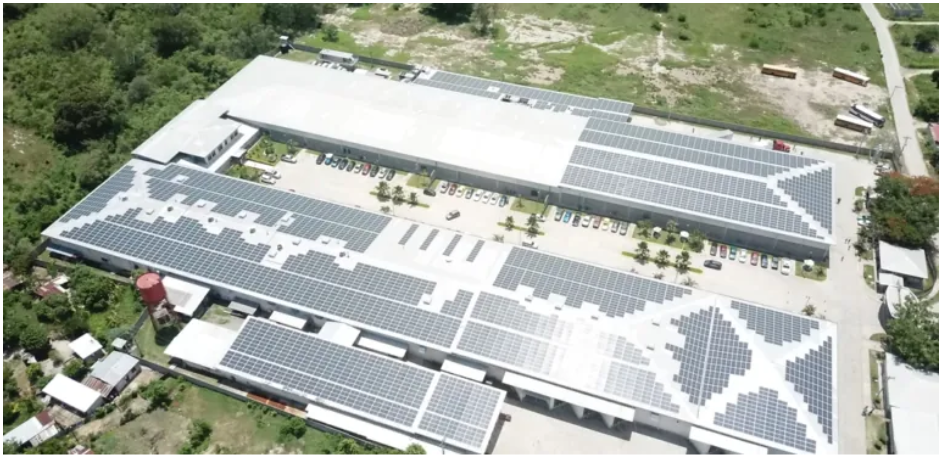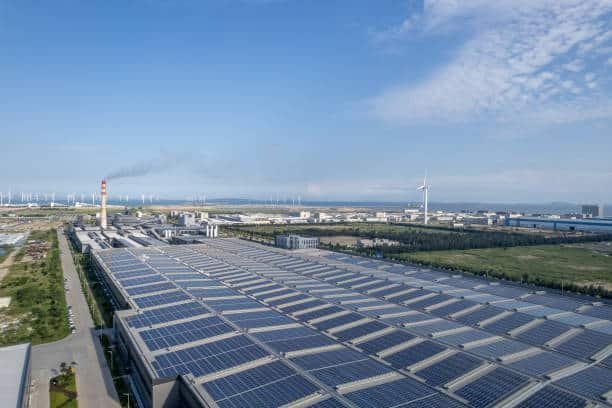In India, many factories are now shifting to solar power. It helps save money and reduce pollution. This case study shows how a textile factory in Gujarat switched to solar energy and saw great results.
This story is about the benefits, challenges, and results of installing industrial solar panels. It also explains how Indian factories can follow the same steps to save energy and money.
The Problem: High Energy Bills and Power Cuts

The textile factory used to rely on grid electricity and diesel generators. Monthly electricity bills were high—over ₹8–10 lakhs per month. Frequent power cuts added to the problem. Diesel was expensive and caused pollution.
Factory owners started exploring solar solutions for industries in India. Their goal was simple:
- Cut electricity bills
- Reduce generator usage
- Become eco-friendly
- Get returns on investment
The Solution: Installing a Rooftop Solar System
Step 1: Energy Audit and Feasibility Study
Experts studied the factory’s energy usage. They found the plant used around 1 MW of power during the day. The rooftop had about 50,000 sq. ft of usable space.
The engineers suggested installing a 1 MW industrial solar system. This size was enough to meet most daytime power needs.
Step 2: Solar System Design
A custom system was designed:
- Panel type: Monocrystalline high-efficiency
- Number of panels: Around 3,000
- Capacity: 1 MW
- Inverters: 10 string inverters
- Mounting: Flat roof structures with wind protection
They also added a smart monitoring system to track power generation in real time.
Step 3: Approvals and Subsidies
The team applied for:
- Net metering approval
- Accelerated depreciation (40% in Year 1)
- State capital subsidy for industrial solar
- Safety clearance and structural certification
Getting approvals took about 4–6 weeks. The factory qualified for tax benefits, which reduced the effective cost of the system.
Step 4: Installation and Commissioning
Installation was done in 3 months. Key steps included:
- Roof inspection and load testing
- Mounting frame setup
- Solar panel and inverter installation
- Wiring and net metering connection
- Safety checks and live testing
Also Read Solar PV vs Solar Thermal: Which Solar Technology Is Right for You?
The Results: Big Savings and Clean Energy
Power Generation
The solar plant now generates 1.2 million units (kWh) per year. This covers 40–50% of the factory’s total daytime electricity needs.
Cost Savings
The factory now saves about ₹96 lakh per year on power bills. Diesel generator use has dropped by more than 60%.
Return on Investment (ROI)
- Initial cost: ₹5 crore
- Annual savings: ₹1 crore
- Payback period: ~5 years
- Lifetime savings: Over ₹15 crore in 20 years
The factory earns back its investment in 5 years. After that, it’s pure savings.
Environmental Impact
- CO₂ savings: Over 1,200 tonnes per year
- Equivalent to planting 50,000 trees
- Supports green branding for exports and investors
Challenges Faced and Their Solutions
Weak Roof Sections
Some roof areas were old. Engineers reinforced them before placing the solar structure.
Dust and Pollution
Dust lowered panel efficiency. The factory installed an automatic panel-cleaning system to solve this.
Grid Integration
Initial net-metering setup faced delays. The team coordinated with the DISCOM to resolve it quickly.
Similar Success Stories in India
Factories across India are now adopting solar power:
- A cold storage unit in Bihar installed a 100 kW system and saved over ₹10 lakh in one year.
- A paper manufacturing plant in Maharashtra installed a 500 kW system and reduced its electricity bills by 50%.
- A chemical factory in Rajasthan switched to a hybrid solar + grid system and improved energy reliability.
These examples show that solar for factories in India is not just affordable—it’s profitable.
Why More Factories Should Choose Solar
Here’s why solar installation for factories makes sense:
- Lower energy costs: Electricity prices are rising. Solar gives long-term savings.
- Tax benefits: Accelerated depreciation cuts your taxes.
- Subsidies: Many Indian states offer capital subsidies.
- Green image: Helps with branding and compliance
- Energy independence: Reduces reliance on grid and diesel
Tips for Other Factory Owners
- Do an energy audit – Know how much power your factory uses.
- Choose an experienced solar installer – Industrial solar is complex.
- Use net metering – Export extra power to the grid and earn credits.
- Clean panels regularly – Dust cuts efficiency.
- Monitor output daily – Fix faults before they grow.
FAQs About Solar for Factories
Q1. How much does a solar system cost for a factory?
Q2. How long is the payback period?
Q3. Is maintenance expensive?
Q4. What is the life of a solar plant?
Q5. Can factories use solar at night?
Q6. Are government subsidies still available?
Final Thoughts
Switching to solar helped this Gujarat factory cut energy costs, reduce pollution, and build a greener future. The investment paid off in just 5 years and will continue to generate free power for decades.
Whether your factory is in textiles, food, pharma, or any other sector, solar is a smart, long-term move. The key is to plan well, choose the right installer, and monitor your system regularly.
If your factory has a roof and high electricity bills, solar could be your best decision this year.
Author- Ayush






